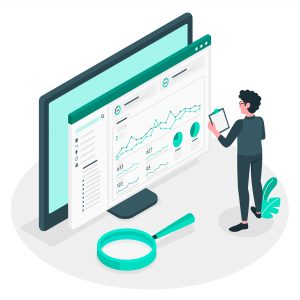
In today’s digital landscape, understanding user behavior is key to unlocking the potential of your website or online business. While website clicks provide valuable insights, they only scratch the surface. To gain a comprehensive understanding of your audience, you need to go beyond clicks. That’s where Google Analytics comes into play. In this article, we will explore how Google Analytics empowers you to delve deeper into user behavior, providing valuable data and insights to optimize your online presence.
- Tracking User Engagement
Google Analytics offers a plethora of tools and features that enable you to measure user engagement effectively. For instance, the average session duration metric provides an indication of how long users spend on your website. According to a study by SessionCam, websites with longer average session durations tend to have higher conversion rates. By analyzing this metric, you can identify areas where users are spending more time, allowing you to optimize content and calls-to-action to increase engagement and drive conversions.
Additionally, bounce rates provide insights into the percentage of visitors who leave your website after viewing only one page. A high bounce rate might indicate issues with page relevance, loading speed, or overall user experience. According to a study by Kissmetrics, websites with lower bounce rates tend to have higher average time on site and better conversion rates. By analyzing bounce rates in Google Analytics, you can identify pages that require improvement, leading to a better user experience and increased conversions.
- Unveiling User Flow
Understanding the flow of users on your website is crucial for conversion optimization. Google Analytics provides visual representations of user flow, revealing the path visitors take as they navigate from one page to another. By examining this data, you can identify pages with high drop-off rates or bottlenecks in the user journey.
According to an analysis by Econsultancy, identifying and optimizing user flow can lead to a significant increase in conversions. By making strategic changes to improve the user flow, such as reducing the number of steps required to complete a purchase or enhancing navigation, you can guide visitors towards desired actions and ultimately boost conversion rates.
- Behavior Flow Analysis
The behavior flow analysis feature in Google Analytics allows you to track the actions users take on specific pages. It provides valuable insights into how visitors engage with your content, such as button clicks, form submissions, or downloads. By analyzing behavior flow, you can identify which content elements are resonating with your audience and which ones are underperforming.
For example, if you find that a particular blog post consistently drives high engagement and leads to conversions, you can replicate the success by creating more content on similar topics. According to a study by Demand Metric, content marketing generates three times more leads than traditional marketing, and high-quality content can increase conversion rates by up to 200%. Leveraging the behavior flow analysis in Google Analytics allows you to identify and optimize content that resonates with your audience, driving higher engagement and conversions.
- Segmenting User Behavior
Every website has a diverse audience with unique preferences and behaviors. Google Analytics enables you to segment your audience based on various criteria such as demographics, devices, or traffic sources. By segmenting user behavior, you can uncover patterns and trends specific to each group.
For instance, if you run an e-commerce website, segmenting users by geographic location can reveal valuable insights. According to a study by Statista, 54% of consumers worldwide prefer to purchase products from local brands. By analyzing the behavior of users from different locations through Google Analytics, you can tailor your marketing campaigns, content, and user experience to suit the preferences and needs of specific geographic segments. This targeted approach can lead to higher engagement, increased conversions, and ultimately, business growth.
- Event Tracking
Google Analytics allows you to set up event tracking to monitor specific user interactions, such as video plays, downloads, or form submissions. Event tracking provides invaluable data on user engagement beyond page views and click-through rates.
For instance, by tracking video plays, you can gain insights into which videos resonate most with your audience and contribute to conversions. According to a study by Wyzowl, 84% of consumers have been convinced to make a purchase after watching a brand’s video. By analyzing video play events through Google Analytics, you can optimize your video content strategy, focusing on creating videos that drive engagement and conversions.
While clicks are important, understanding user behavior is the key to unlocking the full potential of your website or online business. Google Analytics goes beyond simple click tracking, providing comprehensive insights into user engagement, behavior flow, and segmentation. Armed with this data, you can optimize your website’s user experience, enhance conversion rates, and make data-driven decisions to drive your online success. By leveraging the power of Google Analytics, you can gain a deeper understanding of your audience and take your business to new heights.



